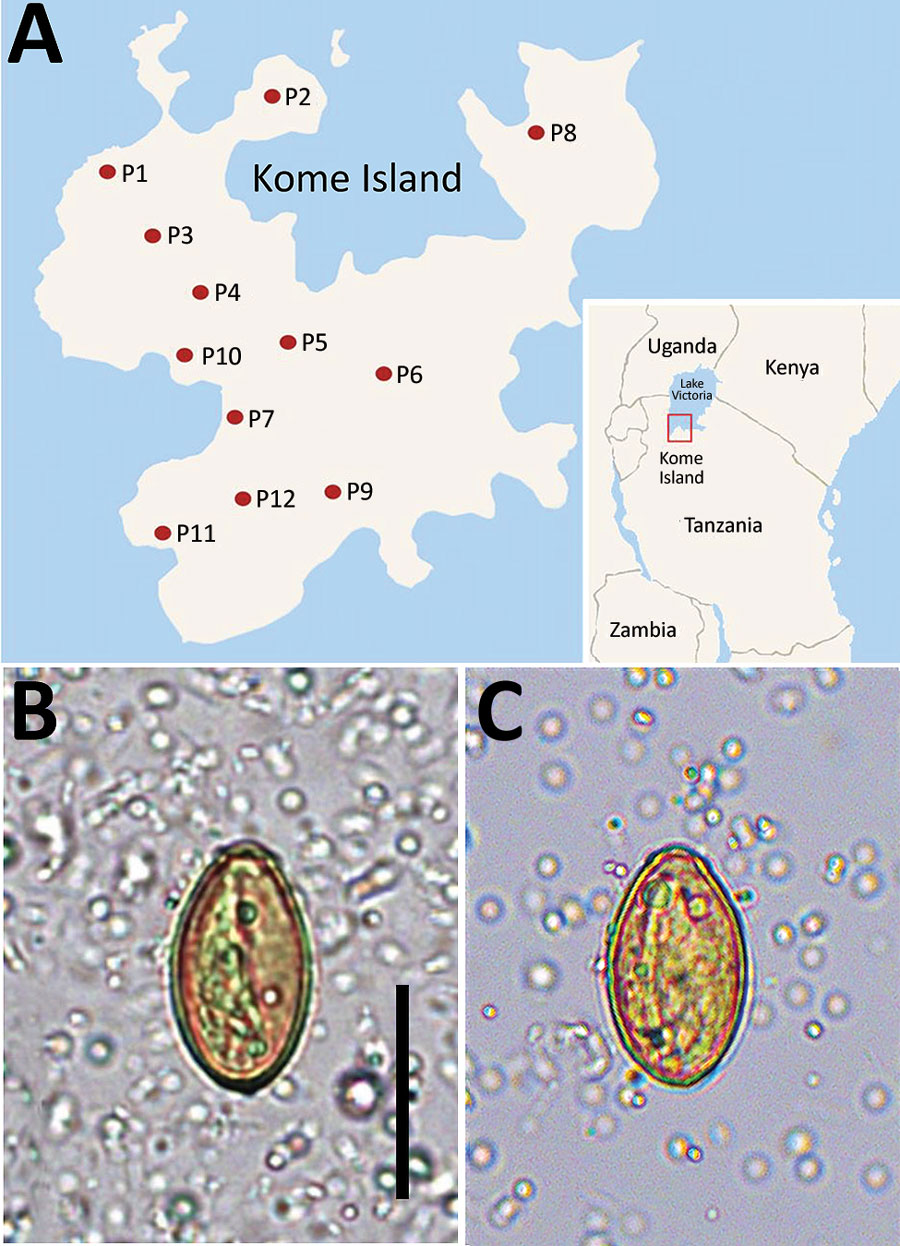Volume 28, Number 11—November 2022
Dispatch
Molecular Detection of Haplorchis pumilio Eggs in Schoolchildren, Kome Island, Lake Victoria, Tanzania
Figure 1

Figure 1. Geographic distribution and imaging from study of Haplorchis pumilio eggs in schoolchildren, Kome Island, Lake Victoria, Tanzania. A) Locations of 12 primary schools (P1–P12) surveyed on Kome Island. Inset shows location of Kome Island. B–C) Small trematode eggs (30.0–30.2 µm long and 16.5–16.6 µm wide) detected in schoolchildren, yellowish-brown in color, oval, and operculate with a thick shell and prominent (B) or less prominent shoulder rims (C). Scale bar = 25 µm.
1These authors contributed equally to this article.
Page created: September 07, 2022
Page updated: October 24, 2022
Page reviewed: October 24, 2022
The conclusions, findings, and opinions expressed by authors contributing to this journal do not necessarily reflect the official position of the U.S. Department of Health and Human Services, the Public Health Service, the Centers for Disease Control and Prevention, or the authors' affiliated institutions. Use of trade names is for identification only and does not imply endorsement by any of the groups named above.